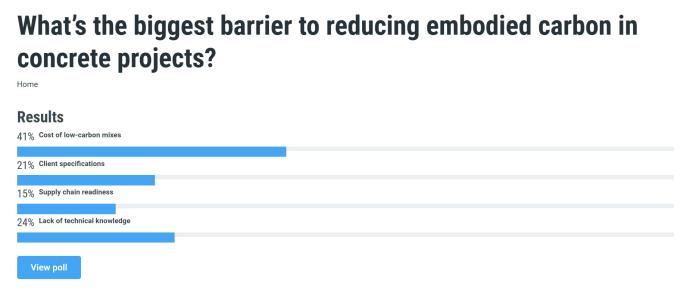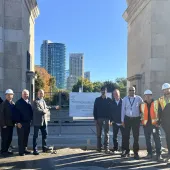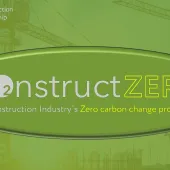Cost leads barriers to low-carbon concrete
Cost pressures continue to hold back the adoption of low-carbon concrete, according to a recent Concrete Connect reader poll.
When asked, “What’s the biggest barrier to reducing embodied carbon in concrete projects?”, 40% of respondents pointed to the cost of low-carbon mixes as the main obstacle. A further 23% highlighted client specifications, and the same proportion cited a lack of technical knowledge, while 14% identified supply chain readiness as the weakest link.
The results underline the continuing tension between sustainability goals and project economics. While material suppliers have expanded their ranges of lower-carbon cements and concrete mixes, many contractors report that client budgets and procurement frameworks are not yet aligned with environmental targets.

Industry specialists suggest that progress will depend as much on education and early design engagement as on product innovation. “Clients need clearer cost-benefit data and consistent benchmarks for embodied carbon,” one respondent noted.
The findings mirror wider sentiment across the construction sector, where reducing embodied carbon remains a shared priority but cost, confidence and specification constraints are slowing change.
Concrete Connect’s next reader poll will ask who should lead the transition to low-carbon concrete: clients, contractors, suppliers or government.







